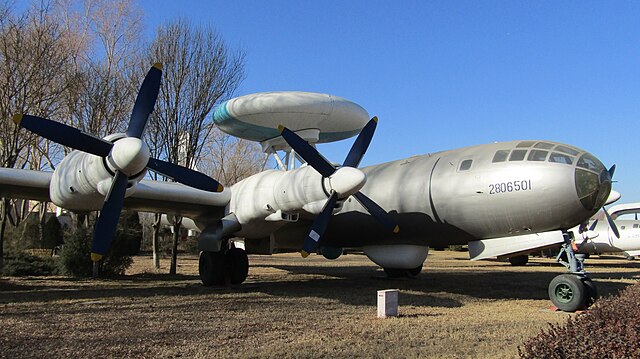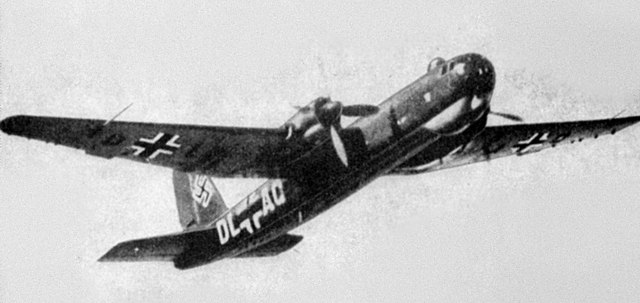The Tupolev Tu-4 is a piston-engined Soviet strategic bomber that served the Soviet Air Force from the late 1940s to mid-1960s. The aircraft was a copy of the American Boeing B-29 Superfortress, having been reverse-engineered from seized aircraft that had made emergency landings in the USSR.
Tupolev Tu-4
Tu-4 at China Aviation Museum
KJ-1 at China Aviation Museum, Beijing
China Aviation Museum, KJ-1.
A strategic bomber is a medium- to long-range penetration bomber aircraft designed to drop large amounts of air-to-ground weaponry onto a distant target for the purposes of debilitating the enemy's capacity to wage war. Unlike tactical bombers, penetrators, fighter-bombers, and attack aircraft, which are used in air interdiction operations to attack enemy combatants and military equipment, strategic bombers are designed to fly into enemy territory to destroy strategic targets. In addition to strategic bombing, strategic bombers can be used for tactical missions. There are currently only three countries that operate strategic bombers: the United States, Russia and China.
A contemporary U.S. Air Force strategic bomber, the Rockwell B-1 Lancer
The Sikorsky Ilya Muromets was designed by Igor Sikorsky as the first ever airliner, but it was turned into a bomber by the Imperial Russian Air Force.
The only operational strategic bomber with the Luftwaffe in World War II was the troubled Heinkel He 177.
A USAF B-2 Spirit stealth bomber.








